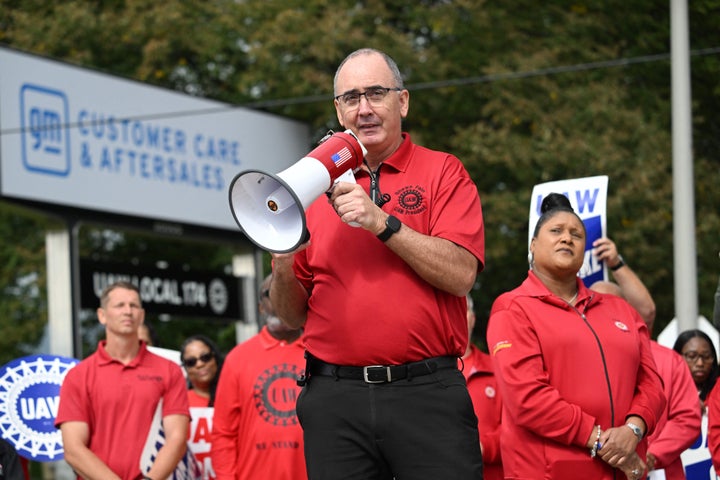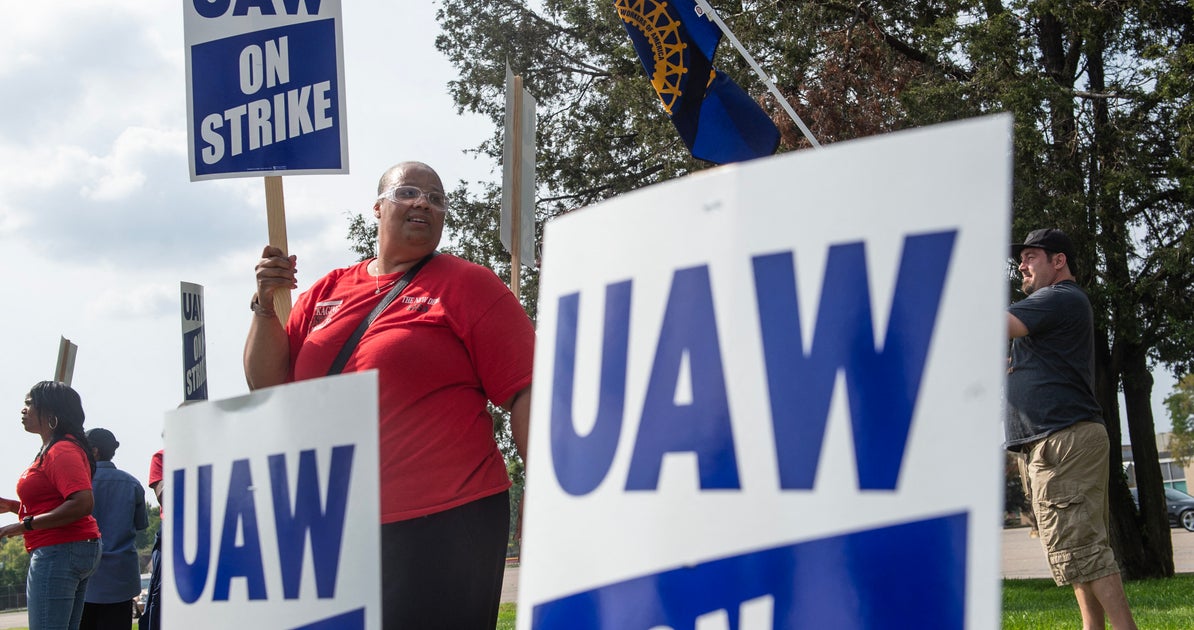The United Auto Workers union said General Motors has agreed to put the company’s battery plant workers under the union’s national contract, calling it a major victory in the ongoing strike against the “Big Three” automakers.
UAW President Shawn Fain said in a Facebook Live address to members Friday that GM had put the agreement “in writing.” The two sides have not yet reached a broader deal on a new four-year contract, but Fain called the battery plant provision a major step forward.
“We’ve been told for months that this is impossible,” Fain said. “We’ve been told the [electric vehicle] future must be a race to the bottom. And now we’ve called their bluff.”
Fain said the Detroit-based automaker agreed to put battery plant workers under the union’s contract after the union threatened to strike the company’s assembly plant in Arlington, Texas, where GM rolls out high-margin SUVs like the Chevy Tahoe and Cadillac Escalade.
A GM spokesperson did not immediately respond when asked to confirm Fain’s announcement, and the union could not provide further details on the plan Friday.
“We’ve been told the EV future must be a race to the bottom. And now we’ve called their bluff.”
– Shawn Fain, UAW president
Battery plant workers loom large in what the union calls a “just transition” away from combustion-engine cars and trucks toward EVs. The union has worried that Ford, GM and Stellantis, which owns the Dodge and Jeep brands, would use the manufacturing pivot as an opportunity to shift away from union labor toward lower-wage, nonunion workforces.
Backed by federal subsidies, automakers are expected to move heavily toward EV production in the years to come. The UAW has insisted that any new jobs created by electric vehicle demand should have the same standards as traditional union auto jobs, with high wages and retirement security.
The automakers have generally maintained that the battery plants are joint ventures with other outside companies and therefore the union could not involve those plants in bargaining.
Fain cast the purported offer from GM as a major breakthrough.
“The [automakers’] plan was to draw down engine and transmission plants and replace them with low-wage battery jobs,” Fain said. “We had a different plan.”
He added, “We expect to win at Ford and Stellantis as well.”

JIM WATSON via Getty Images
The UAW has been on strike against Ford, GM and Stellantis for three weeks. It is the first time in the union’s history that it was waged a concurrent work stoppage at all of the Big Three. But rather than shut down all facilities, the union has opted to strike only targeted plants to leave room for escalation.
So far, roughly 25,000 workers have gone on strike at five assembly plants and dozens of parts distribution facilities, while thousands more have been temporarily laid off as a result of the walkouts. Roughly 150,000 workers are covered under the three national contracts.
The union’s strategy of deploying unpredictable walkouts has left the companies on their toes.
Last week, the union expanded the strike at Ford and GM while sparing Stellantis; the week prior, it expanded the strike at GM and Stellantis while sparing Ford.
On Friday, Fain announced no additional plants to be struck, citing the progress that has been made in negotiations.
“Not everything is about pulling out the bazooka,” Fain said. “We’ve been very careful about how we escalate this strike, and we’ve designed this strategy to increase pressure on the companies, not to hurt them for its own sake.”
He added, “They know we’ve got more cards to play.”







